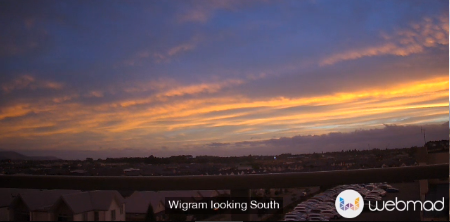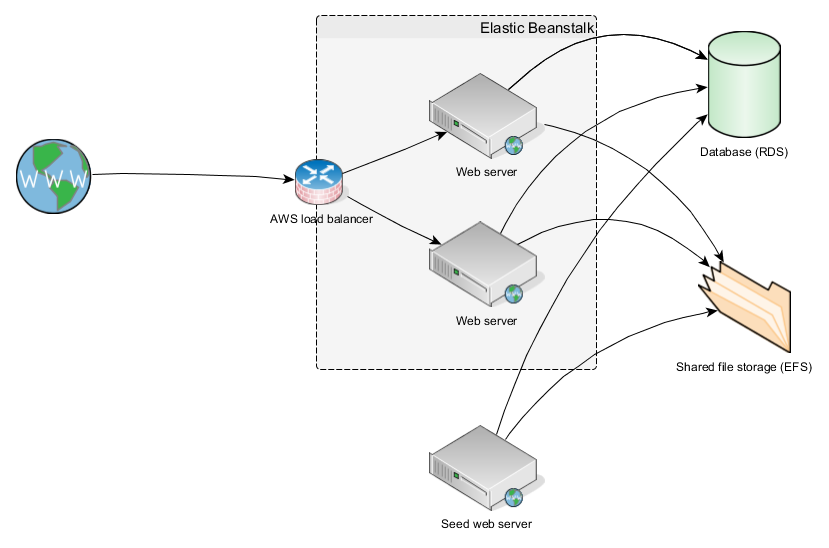Heres the thing… many websites don’t need one. Will the world break? Nope. Will you be putting your best face out to the world if you don’t have one? Well… not really. And this is the tricky bit.
Most browsers nowadays will mark your website as not being secure if you don’t have an SSL certificate, and you will be penalised in search result rankings by the big search players like google etc for not having one. Seems a bit unfair really… but – lets take a look at why we have SSL certificates, and then it might be easier to see why they are actually a good thing to have.
So – what on earth is this SSL thing anyways?
SSL stands for Secure Sockets Layer. Its not like a physical thing. Its a protocol. Don’t zone out. This bits important. SSL is a method of communicating from one device to another, typically from your computer / laptop / mobile phone / tablet / whatever, to the server which hosts your website.
So normal communication for website traffic is sent in plain text. It uses HTML coding language to make it look pretty when you see it, but anyone could read the content and if you can understand html, even just a little, you can probably get the gist of what is happening on the page. If anyone was to get a copy of the communications between your device and the server (this can potentially happen at internet routers etc), they could see what you are up to, and potentially take over your communications and impersonate you to the server, and do things you probably didn’t intend.
A huge majority of the websites out there are the equivalent of an online brochure out there on the internet. So who would care if anyone has seen the content of peoples interactions with your site? Well yeah you wouldn’t really, and its not compulsory for this type of website to have an SSL certificate. But where this falls over is if your website has a contact form, or you ask for any sort of user input. If people could intercept that information, thats not ideal for your clients, and likewise not ideal for you.
This is where SSL comes in. It’s a protocol that defines a method of secure communication between your device and the website server. By securing the communication, no one can listen in on what you send to the server, or what the server sends back. Woo!
Jolly good… So why do i need an SSL certificate? Can I put it on the wall? Frame it? Is there a ceremony?
Yeah nah. What an SSL certificate does is it proves the server is who it claims to be, so that when you you set up an SSL communication link with it, the communication gets encrypted with a special hash (long string of numbers and letters that are mathematically representative of something) which proves that the communication is legitimate. That special hash is called the certificate. If any part of the communication can’t be decrypted with the certificate, lets say part of the communication has changed etc, then the client device can easily pick that up and fail the communication. Because the communication is encrypted, if anyone is watching the traffic, they would need that certificate in order to decode it… Only the device that set up the initial communication channel with SSL can decrypt the communications.
An SSL certificate is locked to a particular domain name. So if someone was to copy your website, they could not use your SSL certificate because it wouldn’t match the domain. Some SSL certificates allow for multiple domain names (sometimes referred to as SANS) to be serviced by the one certificate (lets say you have a website that has multiple domain names pointed at it, but its all served by the same server). You can also get what are known as wildcard ssl certs which are valid for any subdomains of your primary domain name. ie shop.example.com and web.example.com
You can also get stronger SSL certificates. This is measured by the number of bits (digital measurement) of numbers and letters that are used to make up the certificate. So you can get 256 bit through to 2048 bit at the moment, with 1024 to 2048 bit certificates being the industry standard at the moment. The more bits your certificate is, the harder it is for someone trying to decrypt anything signed with it.
The third parameter you deal with when purchasing your SSL certificate is that you need to verify that you are who you say you are. This can be done in 2 ways. Either domain verified or organisation verified.
- Domain verified: This is the easiest form of certificate to get. All you need to do to prove ownership is either verify you have access to an email address linked to the ownership of the domain name you are trying to protect, or to place a file on the website hosting for that domain at a particular location so that the issuing authority can visit it to prove it’s you. Some issuing authorities also allow for DNS based verification where you alter a DNS record on your domain. Thi is by far the quickest option, and can be completed in minutes.
- Organisation verification. This is harder and takes quite a bit longer. You have to verify the domain name as above, but you also need to verify that the company or organisation purchasing the certificate is a valid company or organisation, and has a physical address and phone number verified by a 3rd party like the yellow pages etc. This process can take days or weeks.
Who gives these certificates out, and why can’t i just invent my own?
Well – you can generate your own certificates – these are called self signed certificates. But – because you make it yourself, no-one trusts them, cos you could say anything about yourself, and no-one else can verify your statement. I mean, I’m actually the worlds best chef… I could generate a certificate to tell you this. But if you asked my wife or kids…
Because of this, we need certification authorities who are globally trusted, who can then verify anyone looking to get an SSL certificate is who they say they are courtesy of the domain checks above or the organisation tests. Examples of this are Sectigo and GeoTrust. Different providers offer different services and levels of insurance against your communications being decryptable. These also come at different costs.
What do they cost?
Depends. There are providers like Letsencypt which provide free domain verified SSL certificates. These are great for most brochure websites mentioned above, and give you enough security for web browsers to call your website secure, and your customers peace of mind. If you are offering e-commerce on your website, or any form of data access which is potentially sensitive, then it is strongly recommended to purchase an SSL certificate provided by a provider that offers insurance, as these providers have high trust relationships with web browsers, and give you support with installation and ongoing security of your setup. Purchased SSL certificates typically start from around $10NZD per year + installation, through to multiple thousands of dollars per year (bank level) – it really depends on what you need the certificate to do.
Do I need it?
Nowadays, yip you really do. You need some form of SSL certificate, be it free or paid, just so your website looks safe out there on the internet. This is even more critical if you are wanting to attract visitors using search engines (you are penalised in ranking if you don’t have one) or you offer online products for purchase (e-commerce). Because you will be accepting user credentials or contact details etc, and in some cases accepting payment details, it is imperative for user security that all communications are secured.
There are also newer web technologies that will only work with SSL connections – things like websockets.
If you need assistance with getting your website secured, or have any issues with SSL certificates, contact the team at Webmad and they can get you all set up.




